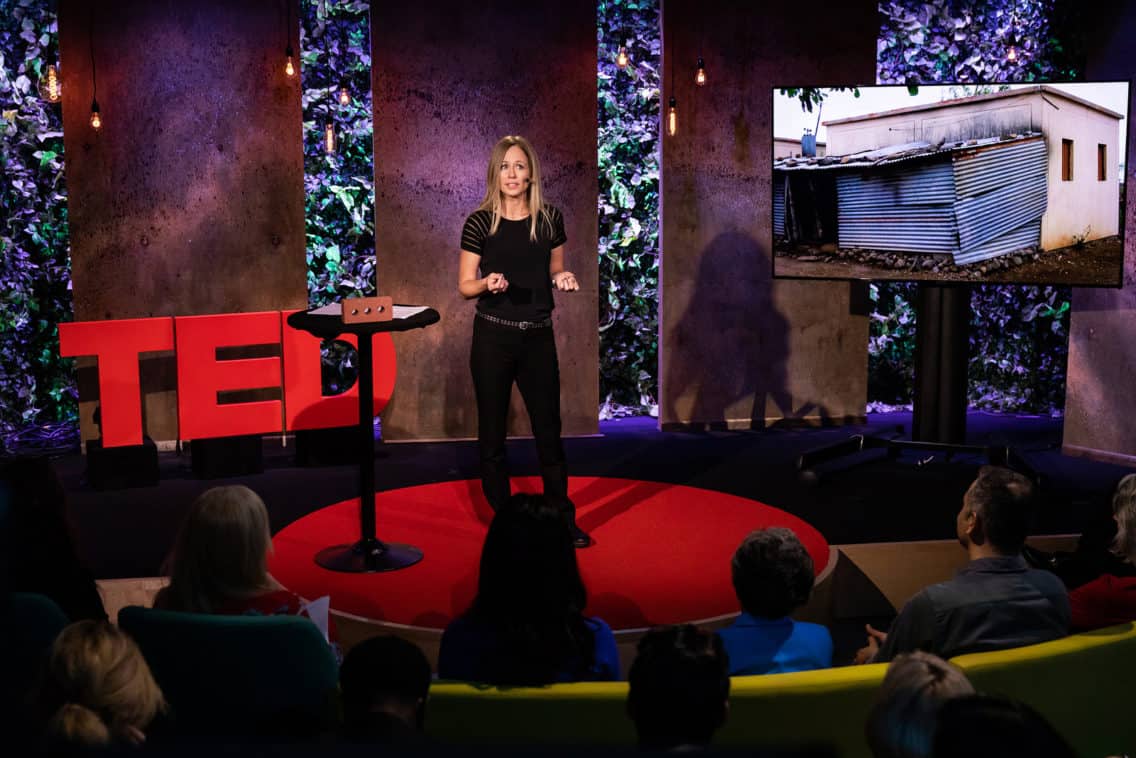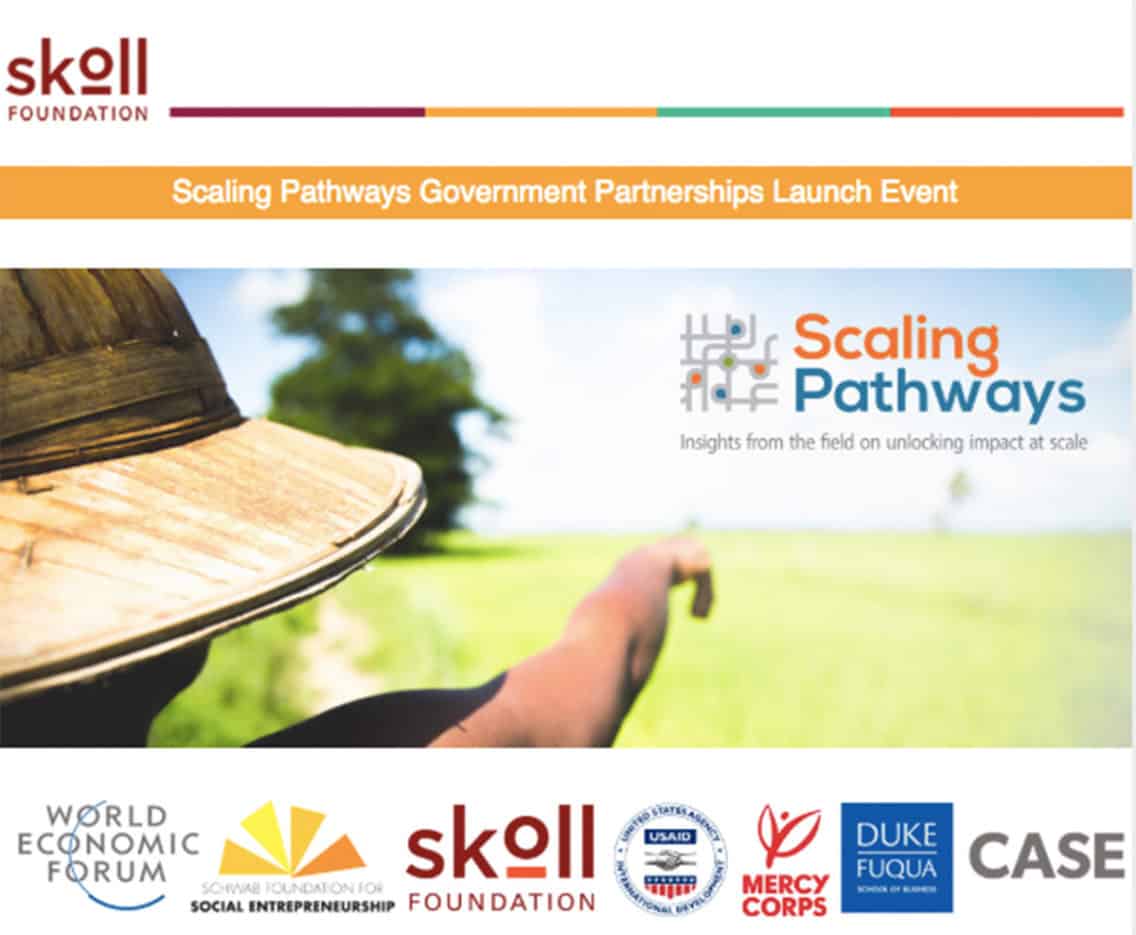TED TALK – DURABLE HOUSING FOR A RESILIENT FUTURE
Build Change CEO Delivers Vision of Housing Resilience at TED Conference
WASHINGTON, D.C., Sept. 25 — Dr. Elizabeth Hausler, Founder and CEO of Build Change, delivered an impassioned TED Talk to the organization’s “We the Future” conference in New York, joining thousands of other social entrepreneurs and activists in calling for a renewed commitment to building housing resilience and battling poverty in the developing world.
The marquis event at the TED World Theater in Manhattan celebrated the 73rd annual opening session of the United Nations General Assembly.
THE RESILIENT HOMES CHALLENGE
Competition breeds creativity! The XPRIZE Foundation’s famed “SpaceX” challenge underscores the power of competition to encourage innovation.
Global Program for Resilient Housing Marks Important Shift Toward Prevention
World Bank and Build Change Introduce New Global Effort to Prioritize Structural Integrity and Retrofit Substandard Housing in Disaster-Prone Regions
WASHINGTON, D.C., Oct. 3 – Build Change and the World Bank on Wednesday launched a major new initiative aimed at improving the safety and structural integrity of millions of homes in the developing world, many of them built with haphazard materials and informal methods that leave them particularly vulnerable to extreme weather events,
Build Change CEO Discusses Power of Government Partnerships During UN General Assembly Week
Dr. Elizabeth Hausler Highlights Build Change’s Experience Working with Governments on Three Continents to Build Safe, Sustainable Housing
Build Change CEO Dr. Elizabeth Hausler joined an esteemed group of social entrepreneurs, policymakers and donors in a panel discussion to explore how best to harness the power of partnerships between nonprofits and government agencies.
The Sept. 26 event marked the launch of the new Scaling Pathways initiative, a partnership of the World Economic Forum (WEF),
Going the Extra Mile, to Rebuild Nepal…
International Women in Engineering Day 2018
To live far away from home, in a different community and culture, and contribute towards a nation’s rebuilding after a disaster requires courage, character and determination for any young person. In Nepal’s traditionally patriarchal society, it can be especially challenging for young women to seize such opportunities. On top of this, success becomes even more challenging within an industry such as engineering which is still perceived in many countries as a “man’s profession.”
The Happy Face of Retrofitting – Corina Sutter in Nepal
Corina Sutter is Director, Government and Regulatory Affairs at RMS, and is based in London. She joined fellow employees from RMS and RMS clients on our annual Impact Trek in Nepal during March this year. This is Corina’s account of her time in Nepal.
When you think about strengthening a building to make it more resilient to seismic events, does “retrofitting” come top of mind? And if you have heard of retrofitting,
Using Catastrophe Models to Promote Resilience
Tom is a Senior Product Manager in the Model Product Management team, focusing on the North Atlantic Hurricane Model suite of products. He joined fellow employees from RMS and RMS clients on our annual Impact Trek in Nepal during March this year. This is Tom’s account of his time in Nepal.
Arriving in Kathmandu for the 2018 RMS Impact Trek, I was already aware of the many years that RMS has provided support for Build Change and its work in areas worst hit by catastrophic disasters.
An Unexpected Opportunity: Presenting at the Fifteenth National Convention of Engineers in Nepal
Jochen Woessner is a lead modeler in earthquake model development at RMS, and is based in Zurich. He joined fellow employees from RMS and RMS clients on our annual Impact Trek in Nepal during March this year. This is Jochen’s account of his time in Nepal.
A Tour of Kirtipur – Callum Higgins in Nepal
Callum Higgins is senior product analyst at RMS, and is based in London. He joined fellow employees from RMS and RMS clients on our annual Impact Trek in Nepal during March this year. This is Callum’s account of his time in Nepal.
Rural Retrofitting in Nepal – Christopher Allen’s 2018 RMS Impact Trek
Christopher Allen is a senior analyst – model development, working with the Event Response team at RMS, and is based in London. He joined fellow employees from RMS and RMS clients on our annual Impact Trek in Nepal during March this year. This is Chris’s account of his time in Nepal.
Peter Cormier – 2018 RMS Impact Trek in Nepal
Pete Cormier is a lead cat analyst for Liberty Mutual, and joined employees from RMS on our annual Impact Trek in Nepal during March this year. This is Pete’s account of his time in Nepal.
Lusi Huang’s Nepal Impact Trek Diary
Lusi Huang is a Risk Engineer for Chubb North America and joined employees from RMS on our annual Impact Trek in Nepal during March this year. This is Lusi’s trek diary.
Press for Progress: Female Architects as Creative Drivers of Post-Earthquake Reconstruction in Nepal
“Press for Progress” is our motto this month as we celebrate Women’s History Month. Women have always been a driving force behind human progress, and this month we celebrate their contributions to the world.
With their exceptional abilities to create, design, and transform, women are already at the forefront in the field of architecture. In Nepal, as elsewhere in the world, more and more women are entering this field. Moreover, they have been using their architectural skills to design earthquake-resistant houses after the devastating earthquakes of April 2015,
Technology in Post-Disaster Reconstruction: How One Woman is Contributing to Thousands of Safer Homes in Nepal
Women are leading the way towards the recovery of earthquake-affected communities in Nepal. Nearly 750,000 buildings were damaged or destroyed in the earthquakes in early 2015, leaving families in temporary shelters and students learning in makeshift school buildings. Rebuilding this infrastructure so that it does not collapse again in a future earthquake takes more than just bricks and money. Access to professional engineers and trained builders, along with other information on safe building techniques,
3 Organizations, 8 Volunteers, and 500,000 Damaged Houses: How Autodesk Foundation, Team4Tech, and Build Change are Collaborating on Efficient Earthquake Recovery in Nepal
An estimated 500,000 houses are only partially damaged after the 2015 earthquakes in Nepal. That means out of 750,000 houses estimated to be damaged or destroyed, 2/3 of them are still standing but cracked and unsafe for people to use. These homeowners are not in need of newly constructed houses, but an opportunity to save as much of their original house as possible and strengthen it through retrofitting. Retrofitting is an innovative and cost-effective method of seismically strengthening existing houses by strengthening structural elements and stabilizing the current structure,
Taking Time to Learn in Nepal
Contributed by Paul Wilson
It’s been 2 weeks, nearly to the day, since I returned from Nepal while I am writing this -although it’s hard to tell precisely given this is the third time zone I’ve been in during that time- but I do know that I’m 2 weeks late in writing this blog. Admitting my tardiness is exactly why the experience of the RMS Impact Trek is of such value.
On Being Women in Engineering
Women play a crucial role in post-disaster reconstruction. In Nepal, where the population is 51% female, this has become especially apparent. Many women have taken on new roles and responsibilities since the earthquakes in 2015, and are at the forefront of permanent reconstruction efforts to build a safer future for their families, communities, towns, and cities.
At Build Change, we have always placed a special emphasis on working with, hiring,
The Impact of Data in Recovering from a Natural Disaster
Contributed by Jeremy Zechar
Hello, dear reader from the future. Perhaps you’re reading this without context, so allow me to set the scene. In March of 2017, RMS invited me, an unsuspecting client, to join their Impact Trek to Nepal. Seven other trekkers and I visited Build Change, an organization whose Nepali operation seeks to help improve construction and retrofitting practices in the villages struck hardest by the April 2015 Gorkha earthquake.
- Page 1 of 2
- 1
- 2



